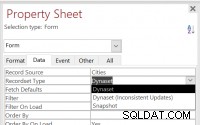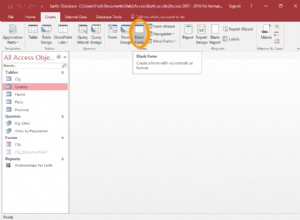Questo ti dà gli stessi risultati che stai chiedendo, in un formato leggermente diverso (ma puoi trovare facilmente PIVOT soluzioni se hai bisogno dello stesso identico set di risultati):
declare @t table (ItemId int,Revision int,State varchar(19),DateChanged datetime2)
insert into @t(ItemId,Revision,State,DateChanged) values
(1,1,'New', '2014-11-13T10:00:00'),
(1,2,'Active','2014-11-15T10:00:00'),
(1,3,'New', '2014-11-17T10:00:00'),
(1,4,'Active','2014-11-19T10:00:00'),
(1,5,'Active','2014-11-20T10:00:00'),
(1,6,'Closed','2014-11-22T10:00:00'),
(2,1,'New', '2014-11-13T10:00:00'),
(2,2,'Active','2014-11-16T10:00:00'),
(2,3,'Closed','2014-11-17T10:00:00'),
(2,4,'Active','2014-11-19T10:00:00'),
(2,5,'Closed','2014-11-21T10:00:00')
;With Joined as (
select t1.ItemId,t1.State,DATEDIFF(day,t1.DateChanged,t2.DateChanged) as Days
from
@t t1
inner join
@t t2
on
t1.ItemId = t2.ItemId and
t1.Revision = t2.Revision -1
)
select ItemId,State,SUM(Days)
from Joined
where State <> 'Closed'
group by ItemId,State
Risultato:
ItemId State
----------- ------------------- -----------
1 Active 5
1 New 4
2 Active 3
2 New 3
Nota che sto ignorando lo PreviousState colonna dalla tua domanda e sto invece costruendo Joined perché ciò che conta davvero è quando il successivo stato è entrato in vigore.
Problemi non affrontati perché non li hai descritti nella tua domanda:1) Cosa fare se lo stato finale corrente non è Closed - cioè lo ignoriamo o contiamo fino ad oggi? e 2) Cosa fare se l'ora del giorno per ogni DateChanged non è lo stesso:dobbiamo gestire giorni parziali?




